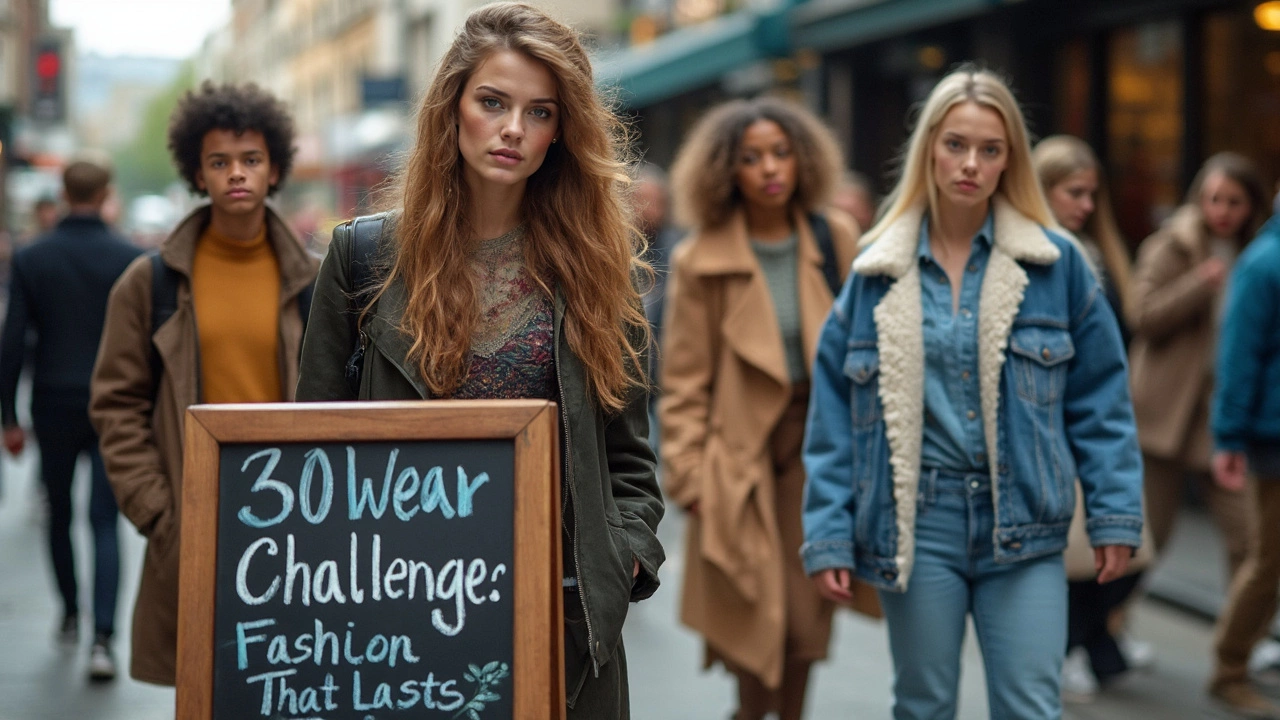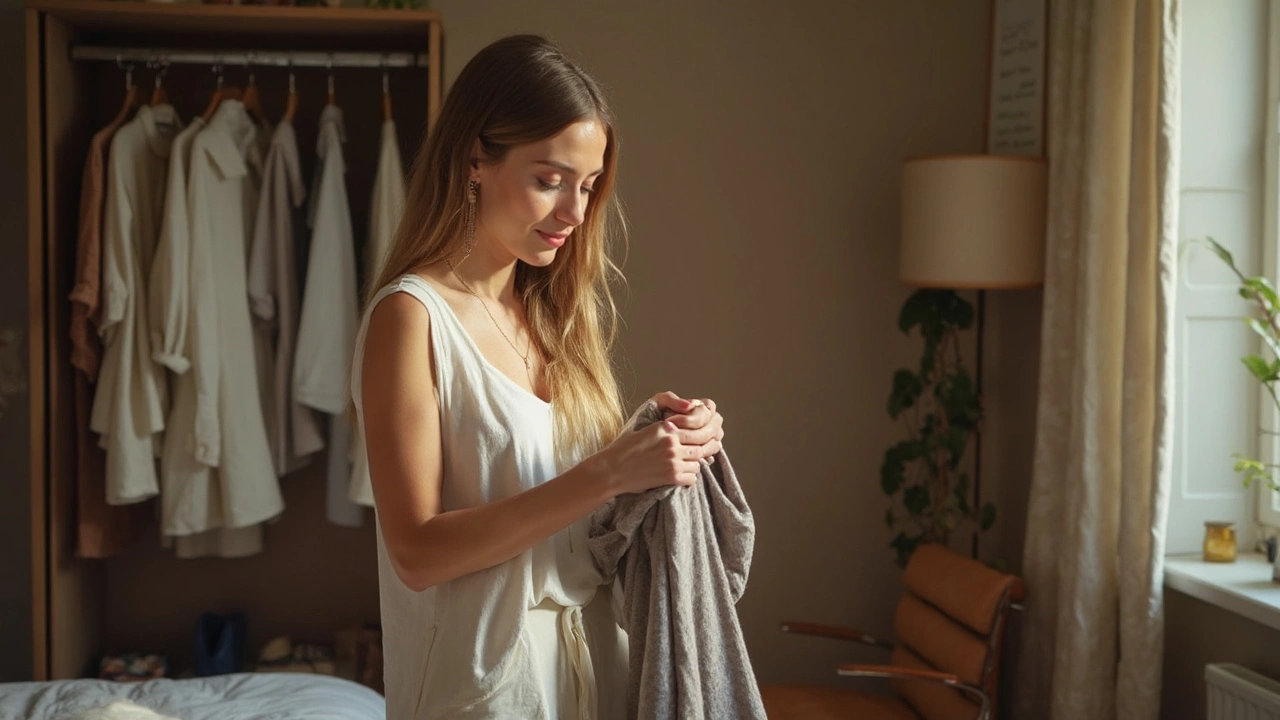Imagine opening your closet and knowing every single piece in there has a real reason to stay. Not just because it’s pretty or trendy, but because it’s earned its spot by being worn again and again. Wouldn’t that feel like a win—for you and the planet? This simple mindset is at the heart of something called the 30 wear rule, and it’s upending how people, from high-school students in Durban to celebrities in Los Angeles, think about their wardrobes. Scroll any sustainable fashion feed right now, and you’ll see the buzz: #30wears. But what’s really going on behind this rule? How does it work in real life, and what changes when you commit to it?
What is the 30 Wear Rule and Where Did It Come From?
The 30 wear rule isn’t just another passing trend; it’s a tool that’s getting a lot of attention in the world of sustainable fashion. At its core, the rule is simple: before you buy a new item of clothing, ask yourself, “Will I wear this at least thirty times?” If the answer is no, it might be best to leave it on the rack. The woman most associated with this clever concept is Livia Firth, the founder of the Green Carpet Challenge and a passionate environmental activist. Livia didn’t just throw this number out at random. Recent stats show that the average item of clothing is worn only about seven times before it’s thrown away (The Guardian, 2015). That’s a big waste—with serious consequences.
So, where did the magic number 30 come from? It’s practical. Thirty wears means you’re making the most out of your purchase, and the item becomes more than just a “one-hit-wonder.” Think about your go-to pair of jeans or that favorite T-shirt you wear everywhere—they’ve probably hit way over the thirty mark. Much of the fashion industry is built around fast cycles and impulse buying. Millions of clothing items are made, bought, and tossed at dizzying speeds. Every year, South Africans send an estimated 54 million kilograms of textile waste to landfills—that’s just one country. The 30 wear rule offers a sharp contrast. It flips clothing into an investment instead of a fleeting thrill. So, next time you’re weighing up choices in a store or even online, “Will I really wear this 30 times?” trims away the urge to splurge on something that’ll end up gathering dust at the back of your wardrobe.
Now, let’s get real—it’s easy to get caught up in cute trends or cheap sales. But most impulse buys rarely stick in your everyday rotation. If you’re honest, how many things in your closet right now make it past ten wears? When the 30 wear rule became a social media meme, it gave both fashion lovers and eco-warriors a secret weapon: a simple, guilt-free way to shop smarter and green up their closets without going full hippie or spending hours on research. Take Emma Watson. She’s on the record about using the 30 wear rule for her red carpet gowns, proving it’s not just for dog-walking T-shirts and leggings. It’s a universal measure—fancy occasion or everyday grind.
Why 30 Wears? The Bigger Picture behind Sustainable Fashion
Fast fashion is a bit like fast food: quick, convenient, and usually bad for you in the long run. The true cost isn’t just in your wallet—it hits the environment hard. Making one cotton T-shirt, for example, takes about 2,700 liters of water (Water Footprint Network). That’s more than the average person in South Africa drinks in three years! When less than 1% of all clothes are actually recycled globally (Ellen MacArthur Foundation, 2017), the rest just gets dumped or incinerated. By asking “Will I wear it at least 30 times?” you slow down this churn and get real value from your clothes. Long-wearing means less waste and lower demand for all those resources that go into making brand new stuff—cotton, chemicals, transport, you name it.
Sustainability isn’t about buying “eco” or “organic” everything. It’s about using what you have and making mindful picks when you do shop. This is where the 30 wear rule knocks out guilt and confusion. Sometimes the “greenest” thing you can do is wear out your current wardrobe instead of tossing it after a single season. Emma Slade Edmondson, a UK-based sustainable fashion consultant, breaks it down this way: even luxury or expensive pieces have a heavy carbon price tag if you wear them three times then get bored. But literally squeezing thirty wears (or more) out of any piece—cheap or pricey—does way more for the planet than buying novelty “earth-friendly” bits that you’ll barely use.
Let’s flip the numbers. Researchers from WRAP (Waste & Resources Action Programme) calculated that extending the average lifespan of clothing by just nine extra months would reduce its carbon, water, and waste footprints by around 20-30%. That’s less landfill, less pressure on water supplies, and fewer emissions clouding the Durban skyline. Is thirty the golden number for everyone? Not always, but it’s a goal that pushes you closer to wardrobe decisions you’ll actually feel good about. Committing to thirty means you’ve chosen versatile, comfy, and durable pieces that suit your real life. It’s practical and empowering. A report from Fashion Revolution South Africa notes that 80% of a clothing item's environmental impact happens before you ever buy it, so every extra wear stretches out that hefty footprint.

Applying the 30 Wear Rule: Tips for Your Next Shopping Trip
Alright, you’re in a store, fitting room selfie at the ready. The 30 wear rule sits in your pocket like a low-key shopping buddy—how do you actually use it? Here’s where it gets interesting. The rule isn’t policing your style, taste, or budget. It’s about slowing down just long enough to think. Will this work with at least five things I already own? Could I wear it to brunch, school pick-up, or at that seaside café in Umhlanga? Is it going to survive a few Durban thunderstorms, or will it fall apart if I so much as sneeze wrong?
- Be real about your habits. Love black skinny jeans? You’ll probably wear those 30 times. Hot pink faux fur coat? Maybe, but only if you’re the type to rock bold stuff everywhere.
- Check for quality. Look at the stitching, try the zippers, stretch the fabric. Flimsy materials won’t last thirty wears—that’s just maths.
- Style-ability counts. If you can already picture three outfits built around this piece, you’re in good shape.
- Wash-ability is secret power. If something shrinks, pills, or fades after one round in the machine, it won’t last the distance.
- Ignore the fake bargains. Any sale item is expensive if you’ll only wear it once. Cost-per-wear tells the real story: divide the price by how many times you’ll wear it. A R1,000 blazer worn 35 times? About R28 a wear. A R250 party dress worn once? That’s a R250 mistake.
And if you’re scrolling on online shops, try this hack: leave the item in your cart for a day or two. If you’re still thinking about how you’ll wear it thirty times, maybe it’s worth it. If you forget it, your wallet and the environment will thank you. Many South African influencers like Sivu Madikana have jumped onto the 30 wear rule hype, showing off creative rewrites of the same piece in fresh looks across weeks or even years. Fashion repeats aren’t embarrassing—they’re badges of sustainability.
Building a 30 Wears-Proof Wardrobe: Real-Life Hacks That Work
Making a wardrobe that survives 30 wears on every piece doesn’t mean uniform boredom or a closet packed with bland basics. It’s about getting crafty and honest about your style. Ever noticed how your favorite items aren’t always the priciest or trendiest? It’s the sweatshirt that fits just right, the sandals that survived last summer’s beach trips, or a dress you’ve worn to sundowners, weddings, and late-night takeout runs. These pieces make up your “hero” clothing.
Personal style isn’t about quantity, it’s about function. Cape Town stylist Jackie Burger has shared that most people cycle through the same 30-40 items in any given year, no matter how massive their wardrobe. So, why clog up space with one-off party tops or impulse buys when you could curate a closet of winners?
- Organize by frequency. Set aside a section for the things you’re always reaching for. These are real candidates for 30 wears (and probably beyond).
- Mix and remix. Play with layering. A slip dress over a tee, blazers with shorts—there’s more combos hiding in your closet than you think.
- Care counts. Washing less often (unless it’s actually dirty), air-drying, and proper folding all keep clothes in the “wear zone” for way longer.
- Repair, don’t retire. Lost a button or got a frayed hem? A quick DIY fix is often all it takes to add 15 more wears.
- Swap and share. Planning a wardrobe swap with friends makes it fun to refresh without buying new—and seeing a friend rock your piece gives it extra life.
Here’s a neat comparison to put things in perspective. Imagine two people in Durban, each buying 20 clothing items a year:
| Wear Rule | Number of Items Bought | Avg. Wears per Item | Total Wears Across Closet/Year | Landfill Impact (after 1 year) |
|---|---|---|---|---|
| 30 Wear Rule User | 20 | 30 | 600 | Far Less |
| Fast Fashion Shopper | 20 | 7 | 140 | Much Higher |
Which side would you rather be on? If you’re looking for fresh inspiration, search #30wears on Instagram—there’s a growing mini-community showing off how they’ve made the rule work, from classic trench coats to recycled-fabric yoga pants. This goes beyond trend: it’s personal power, saving money, wardrobe refresh realness, and less trash clogging up the countryside.
The 30 wear rule isn’t a hard-and-fast law—it’s your own cheat code for guilt-free, planet-friendly shopping. Next time you buy, ask yourself, “Will this earn its place at least thirty times?” You might start slow, but soon those 30 wears will sneak up—along with the warm-fuzzy feeling that you’ve made every choice count.
